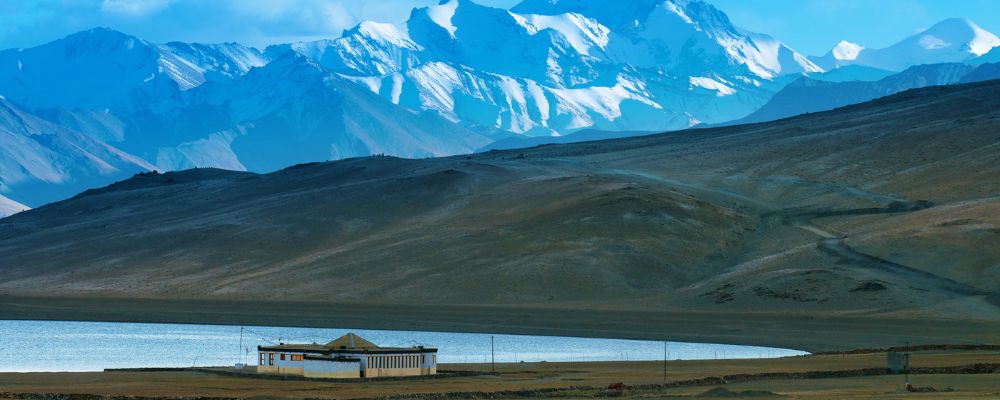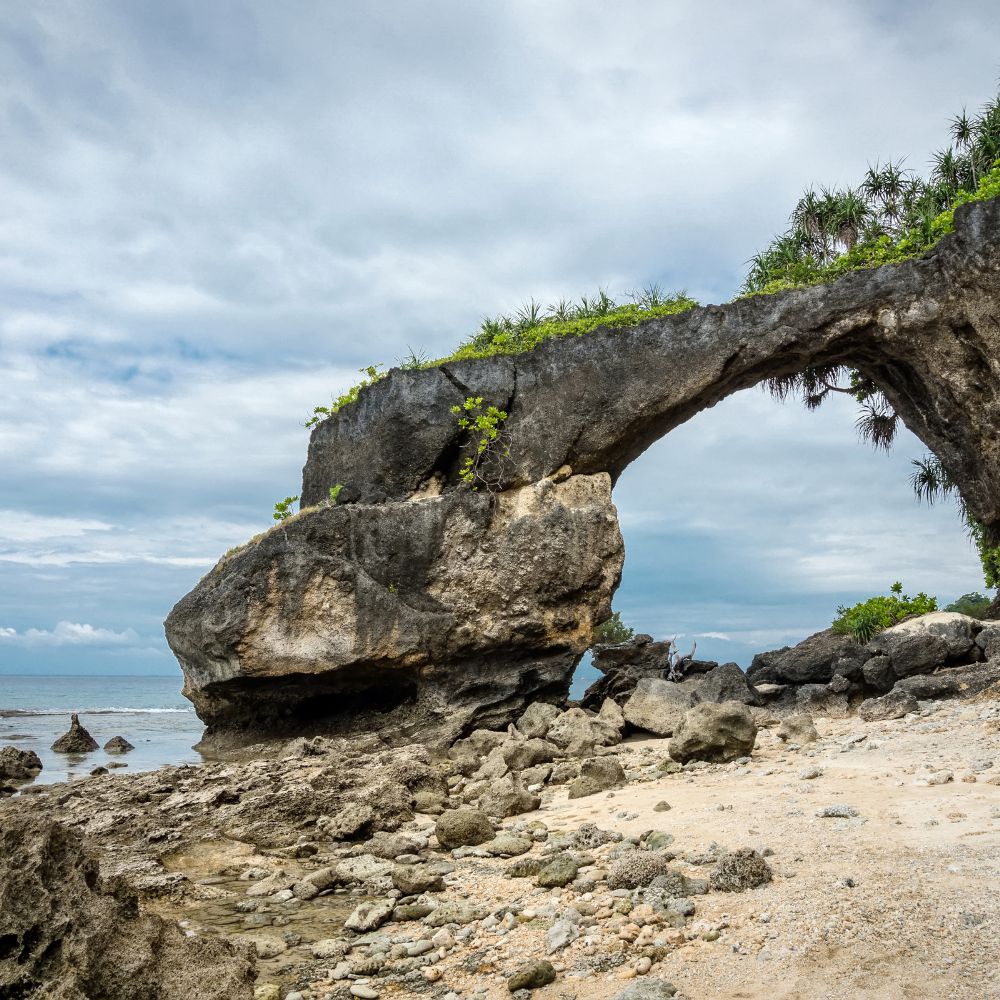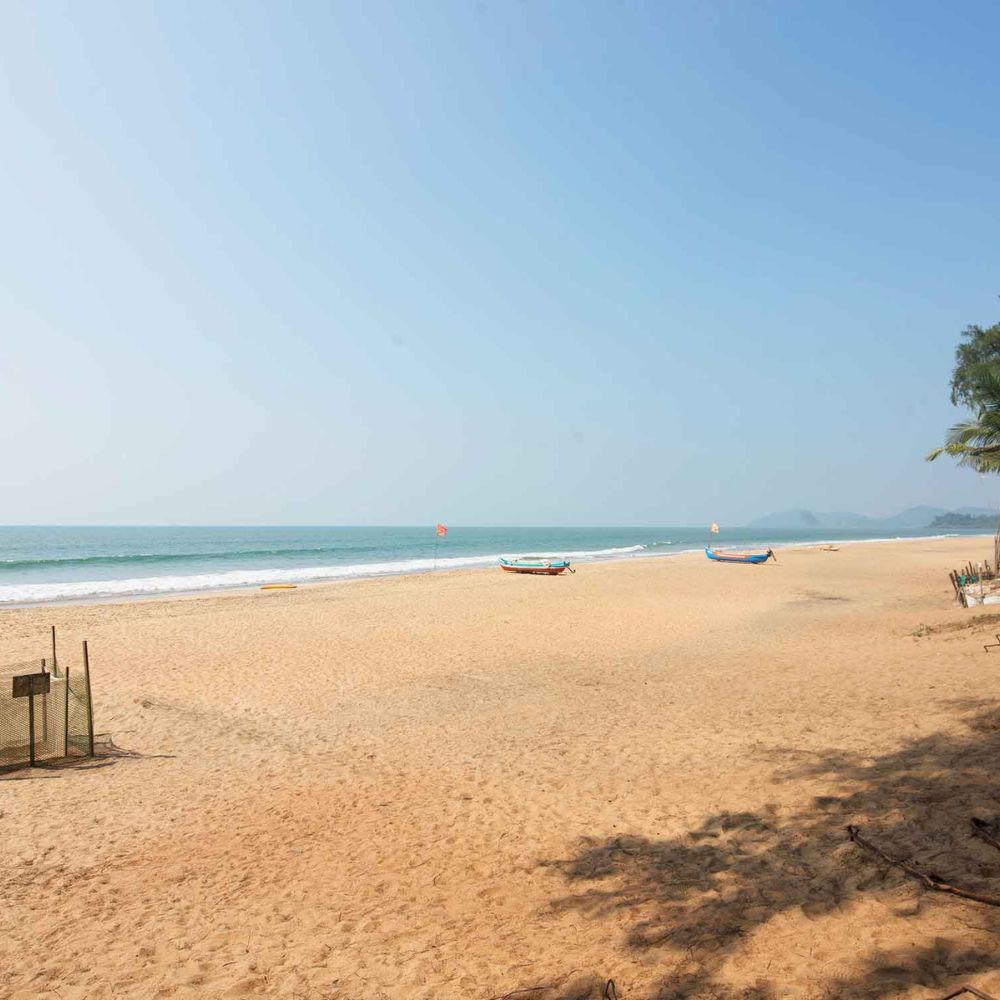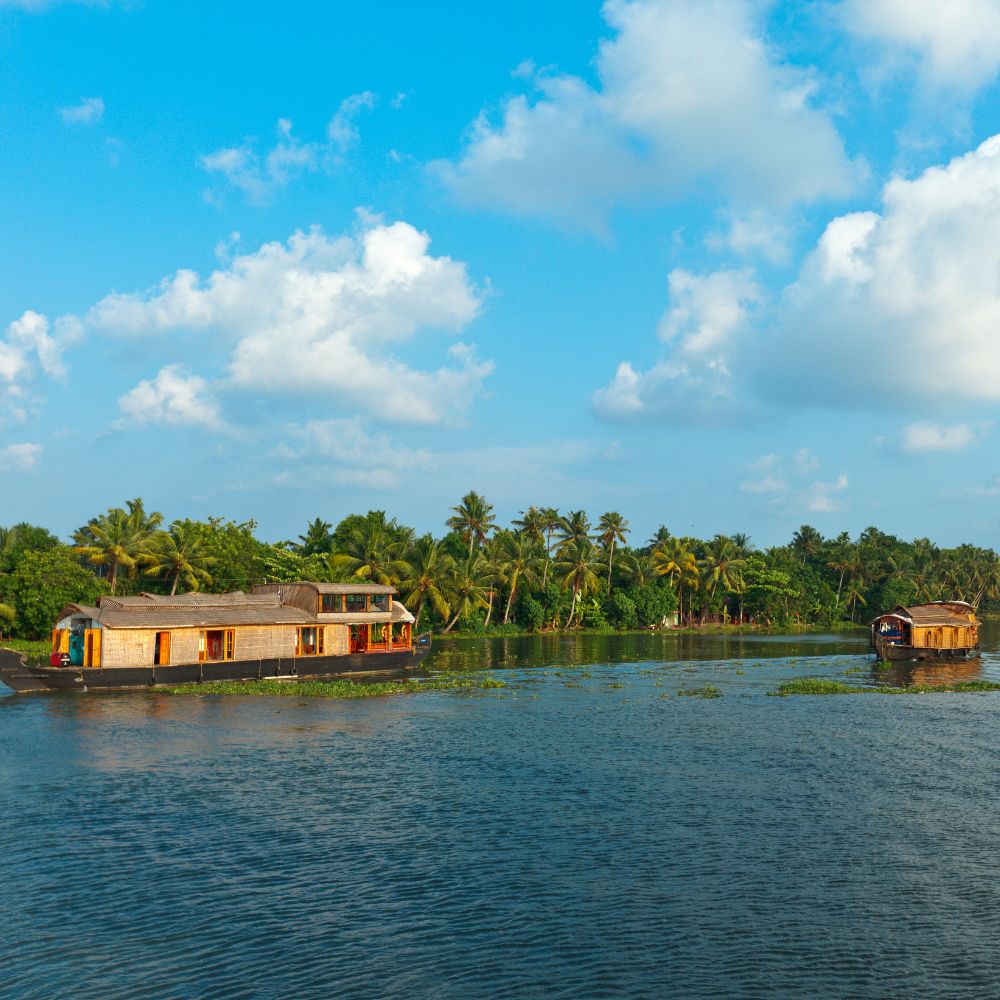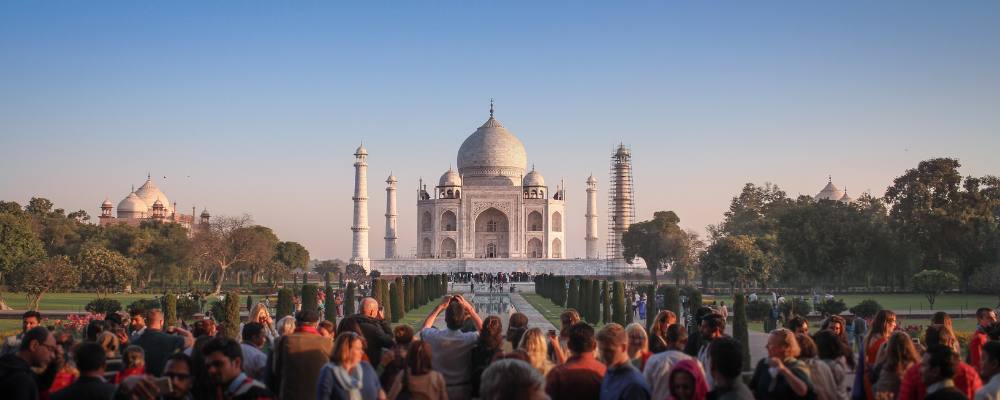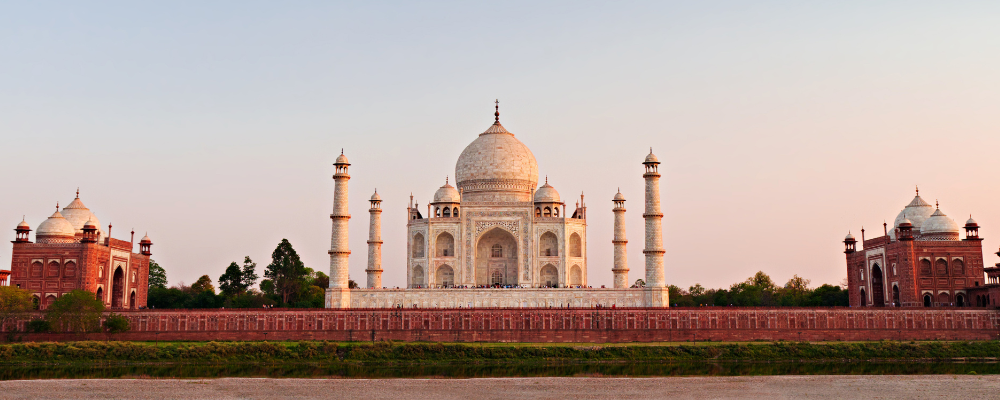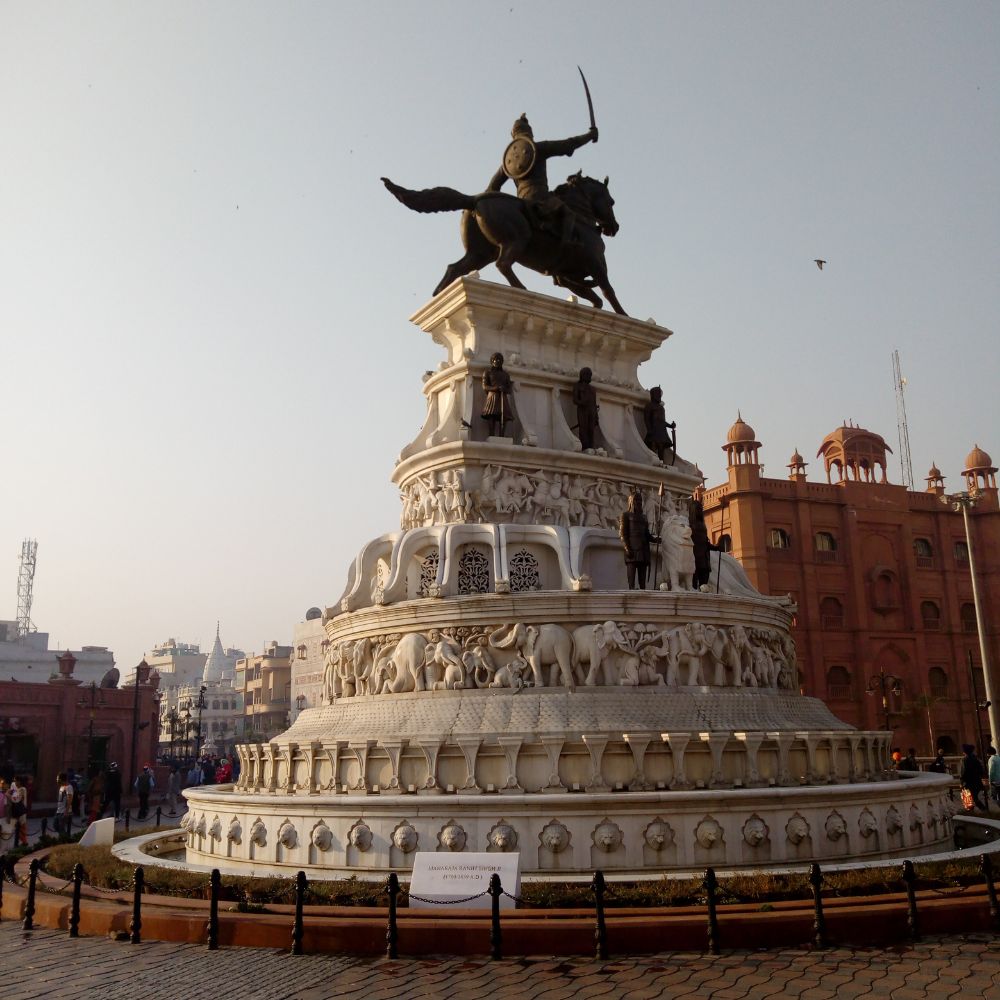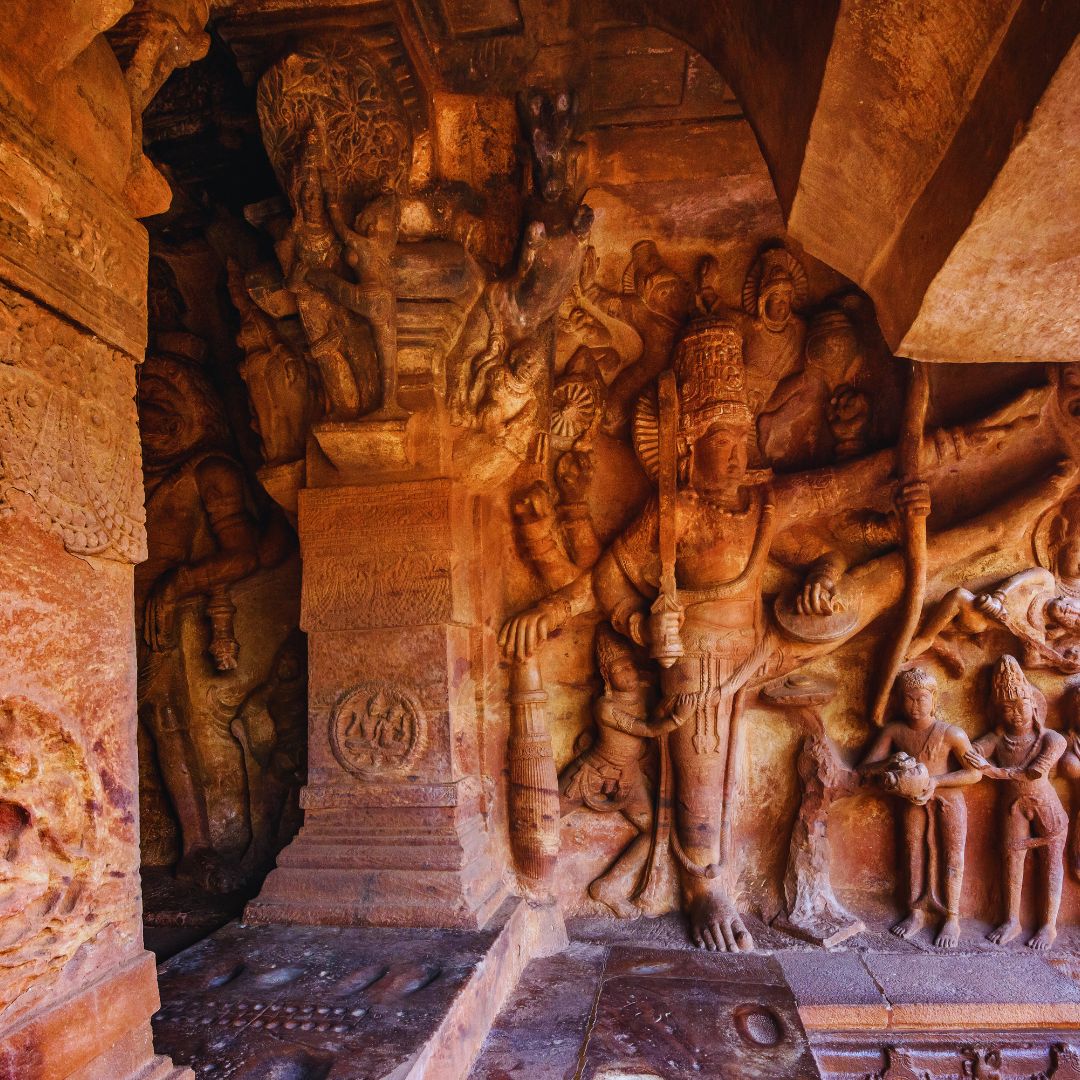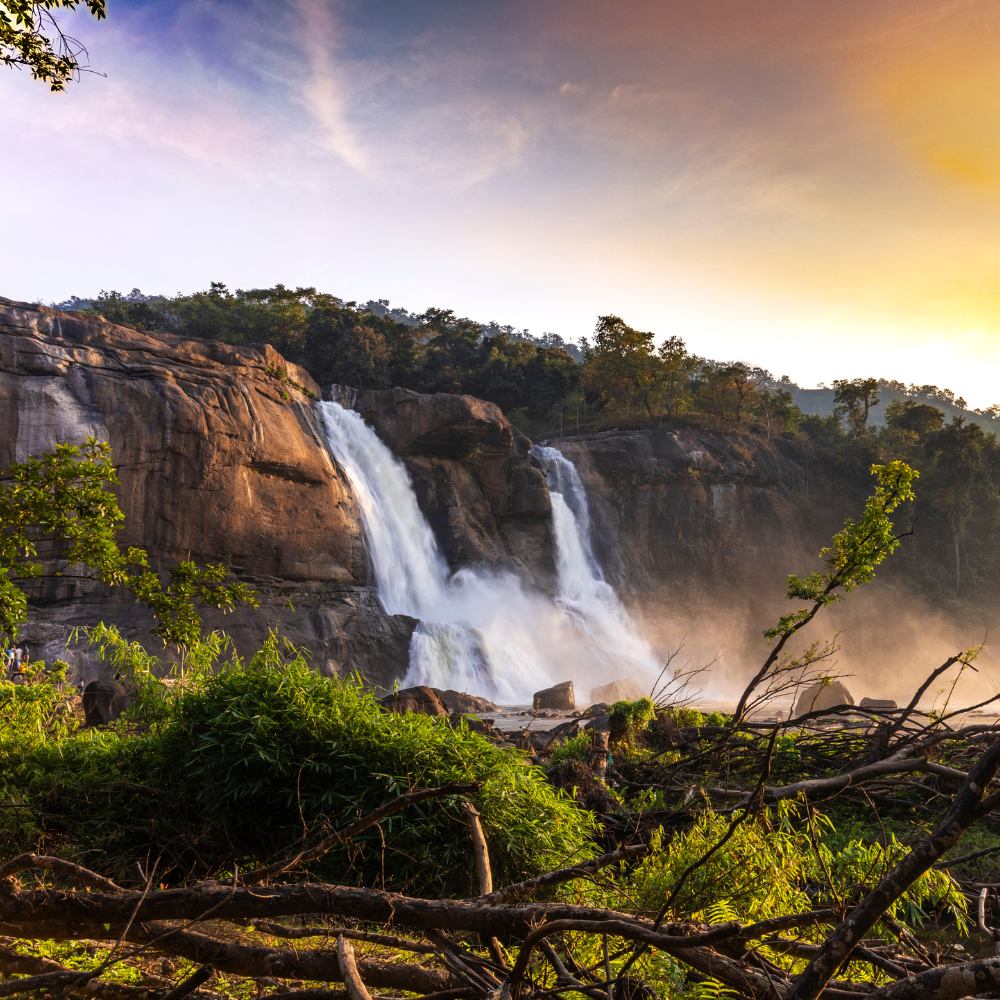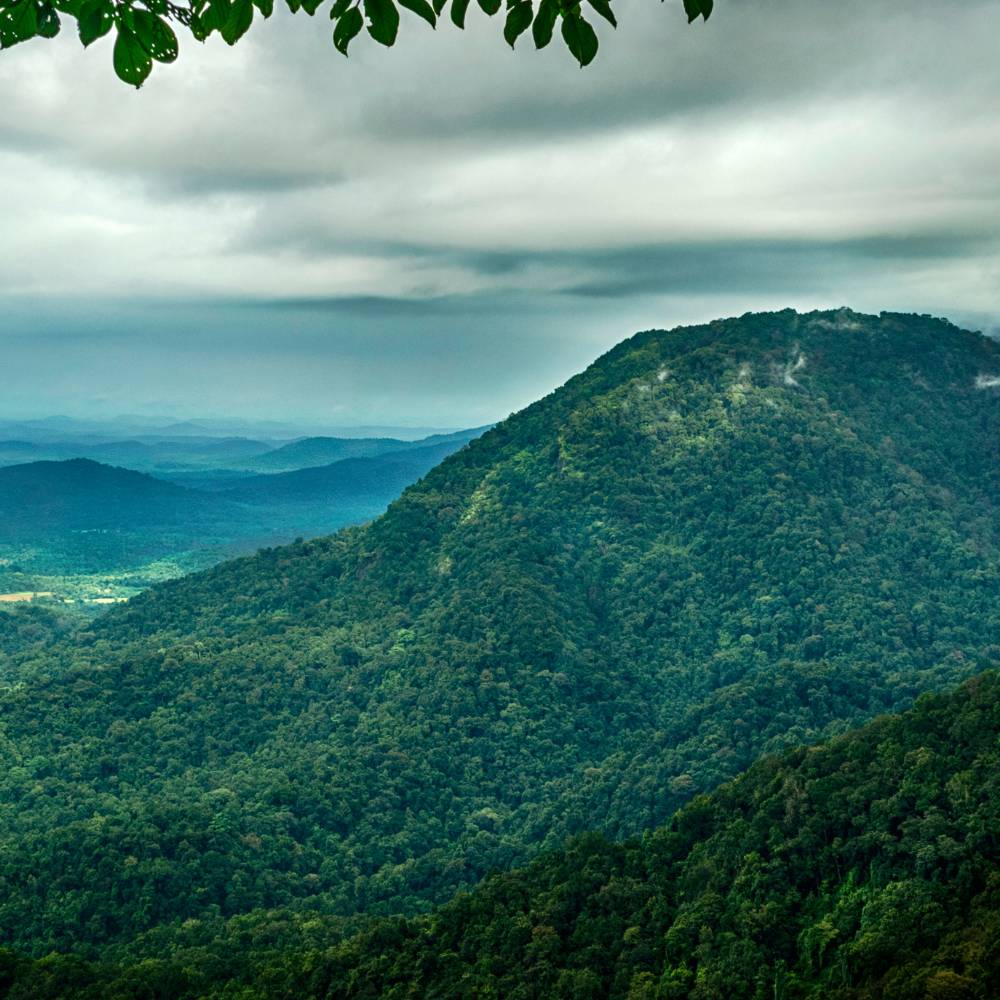Eco-tourism offers a unique and immersive way to experience the breathtaking wonders of our planet while championing the cause of environmental conservation. It invites travellers to delve into adventures that stray far from conventional routes, leading them into the heart of the world's most awe-inspiring natural landscapes. This form of travel not only satisfies the wanderlust for exploring dense rainforests, observing rare wildlife in their natural habitats, and discovering secluded mountain hamlets but also emphasizes sustainability and community well-being.
India stands unparalleled as a prime destination for eco-tourism, offering a spectacular tapestry of natural beauty and cultural diversity. The country's vast geographical expanse encompasses everything from the towering peaks of the Himalayas and the lush greenery of the Western Ghats to the serene waterscapes of Kerala's backwaters. India's eco-tourism landscape is replete with opportunities that promise sustainable travel experiences while enriching the soul.
Prepare to embark on a revitalizing journey through some of the most distinguished eco-tourism destinations across India. This exploration will not only highlight the remarkable biodiversity and scenic splendour of these locales but also underscore the sustainable practices that make them exemplary models of eco-tourism.
Kerala Backwaters
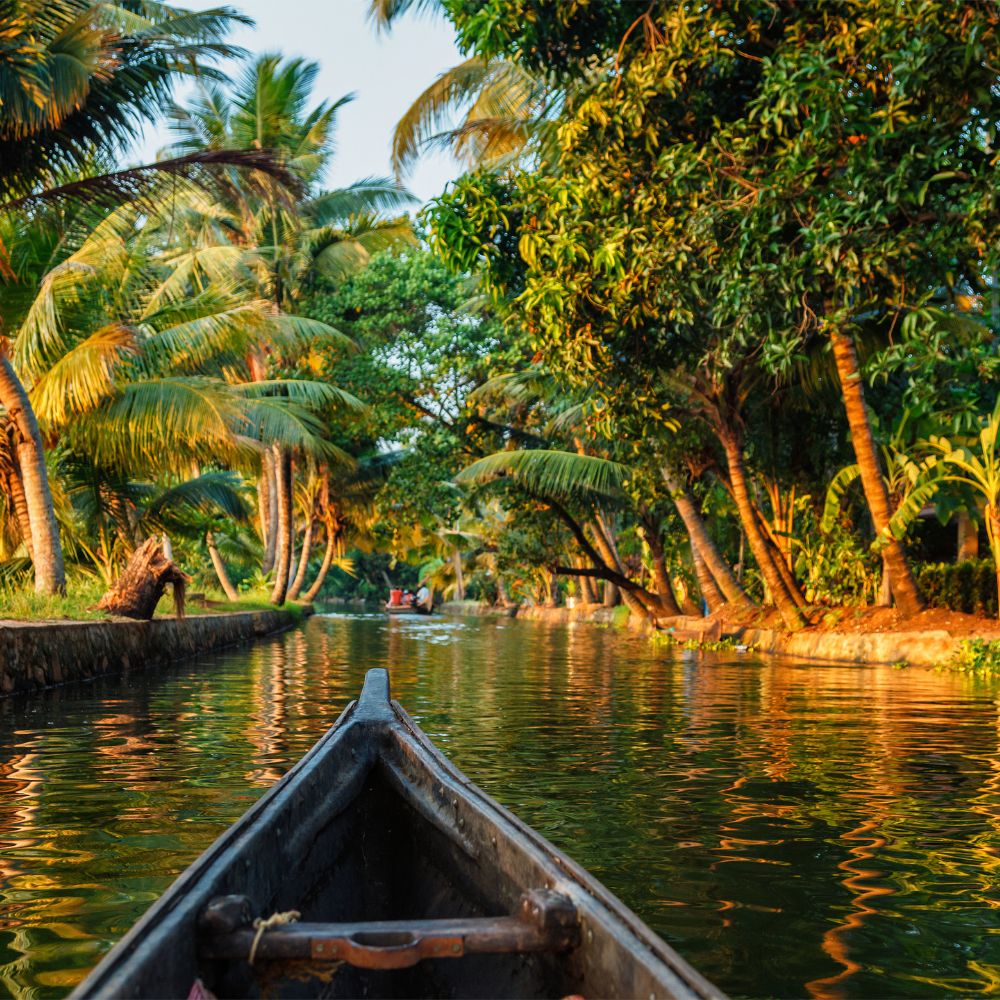
The Kerala Backwaters, with their network of lagoons, lakes, and canals, offer a tranquil escape. Traditional houseboats, or "kettuvallams," glide through these serene waters, providing panoramic views of lush paddy fields, coconut palms, and picturesque villages. The soothing rhythm of the boat and the sounds of nature create an ideal setting for relaxation.
Vembanad Lake, the largest in Kerala, attracts numerous migratory birds, making it a paradise for bird enthusiasts. Species like the Siberian crane and various kingfishers can be seen. Guided tours and canoe trips offer close-up views of these vibrant bird populations, enhancing the nature lover's experience.
Munnar, Kerala
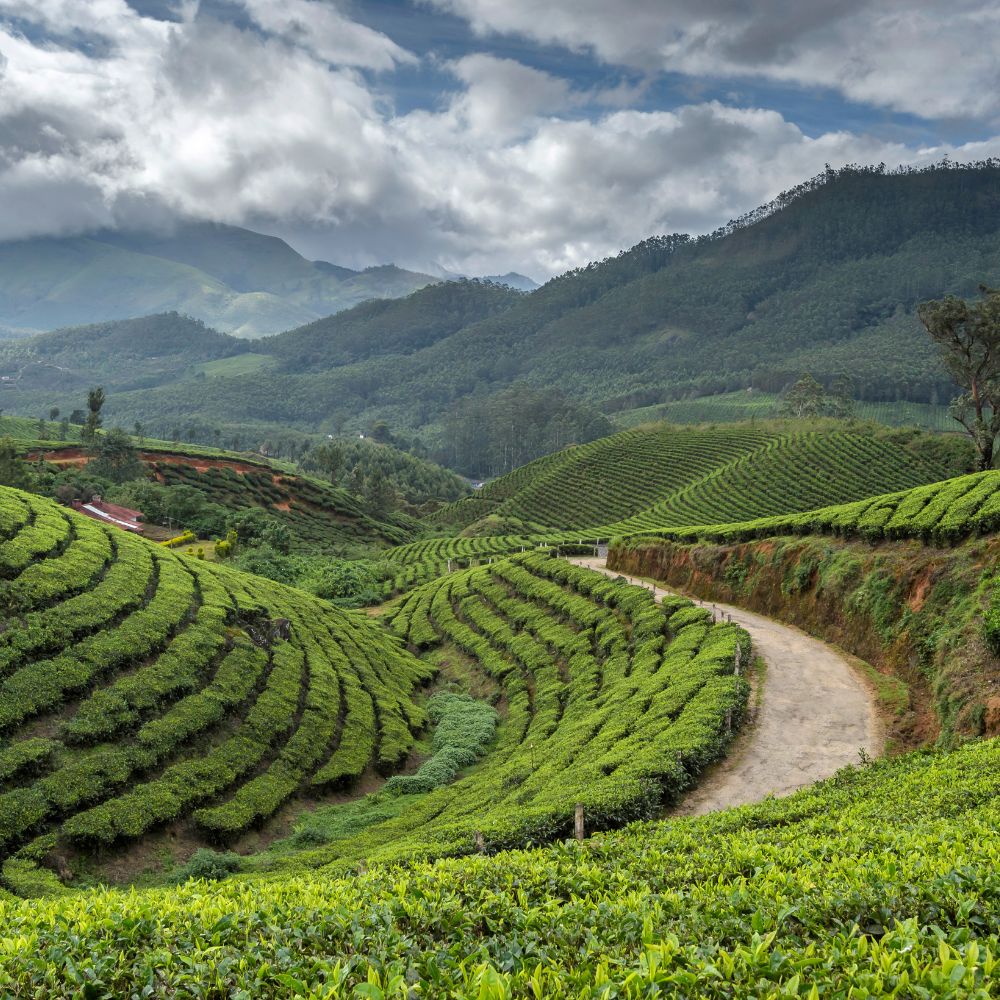
Munnar, nestled in the Western Ghats, is famed for its sprawling tea gardens. Rolling hills covered with verdant tea plantations create a picturesque landscape that captivates visitors. Tourists can take guided tours of the tea estates, learn about the tea-making process, and sample freshly brewed tea. The sight of workers plucking tea leaves against the backdrop of mist-covered hills is truly mesmerizing.
The region around Munnar is dotted with enchanting waterfalls that add to its scenic charm. Attukal, Lakkam, and Nyayamakad waterfalls are popular spots where visitors can enjoy the sight and sound of cascading water amidst lush greenery. These natural wonders offer perfect picnic spots and opportunities for photography.
Periyar National Park
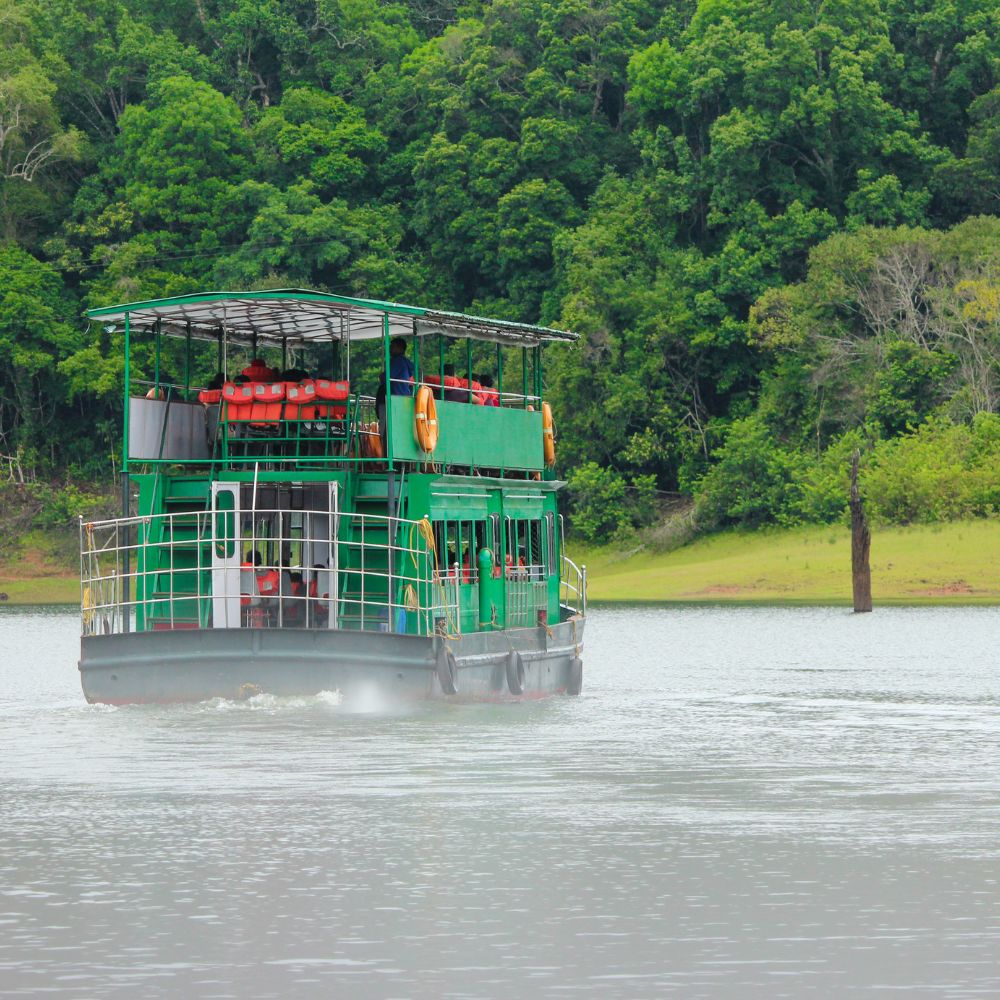
Periyar National Park is home to a diverse array of animal species, making it a paradise for wildlife enthusiasts. From majestic elephants leisurely bathing along the shores of Periyar Lake to elusive tigers prowling through the dense forests, visitors have the opportunity to witness these magnificent creatures in their natural habitat.
The park is also home to other iconic species such as the Nilgiri langur, sloth bear, and sambar deer, offering thrilling encounters for those venturing into its depths. One of the highlights of Periyar National Park is the opportunity to embark on boat safaris along the tranquil waters of Periyar Lake. These leisurely cruises offer a unique vantage point for observing the park's diverse wildlife and breathtaking landscapes.
Kodaikanal, Tamil Nadu
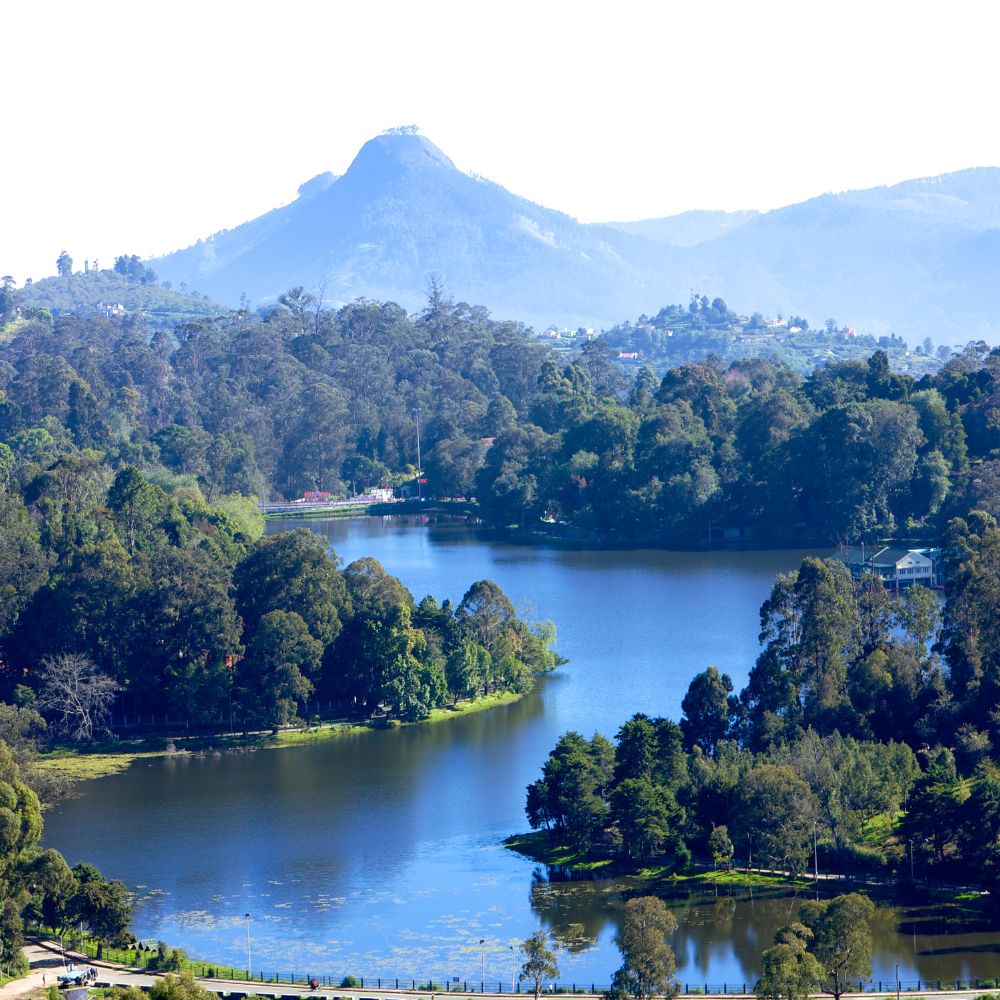
Kodaikanal, often referred to as the "Princess of Hill Stations," is a popular eco-tourism destination in Tamil Nadu. Perched at an elevation of 2,133 meters above sea level in the Palani Hills, Kodaikanal is known for its cool climate, scenic vistas, and lush greenery. The misty mountains, tranquil lakes, and cascading waterfalls make it an ideal retreat for nature lovers.
At the heart of Kodaikanal lies the star-shaped Kodaikanal Lake, a man-made marvel surrounded by dense forests. located near the lake, is a well-maintained botanical garden that showcases a variety of flowers, shrubs, and trees. The park's annual flower show attracts numerous visitors, adding a splash of colour to the already vibrant landscape.
Kodaikanal is home to several stunning waterfalls, including the Silver Cascade, Bear Shola Falls, and Thalaiyar Falls. These waterfalls are not only picturesque but also offer refreshing spots for picnics and relaxation.
Coorg, Karnataka
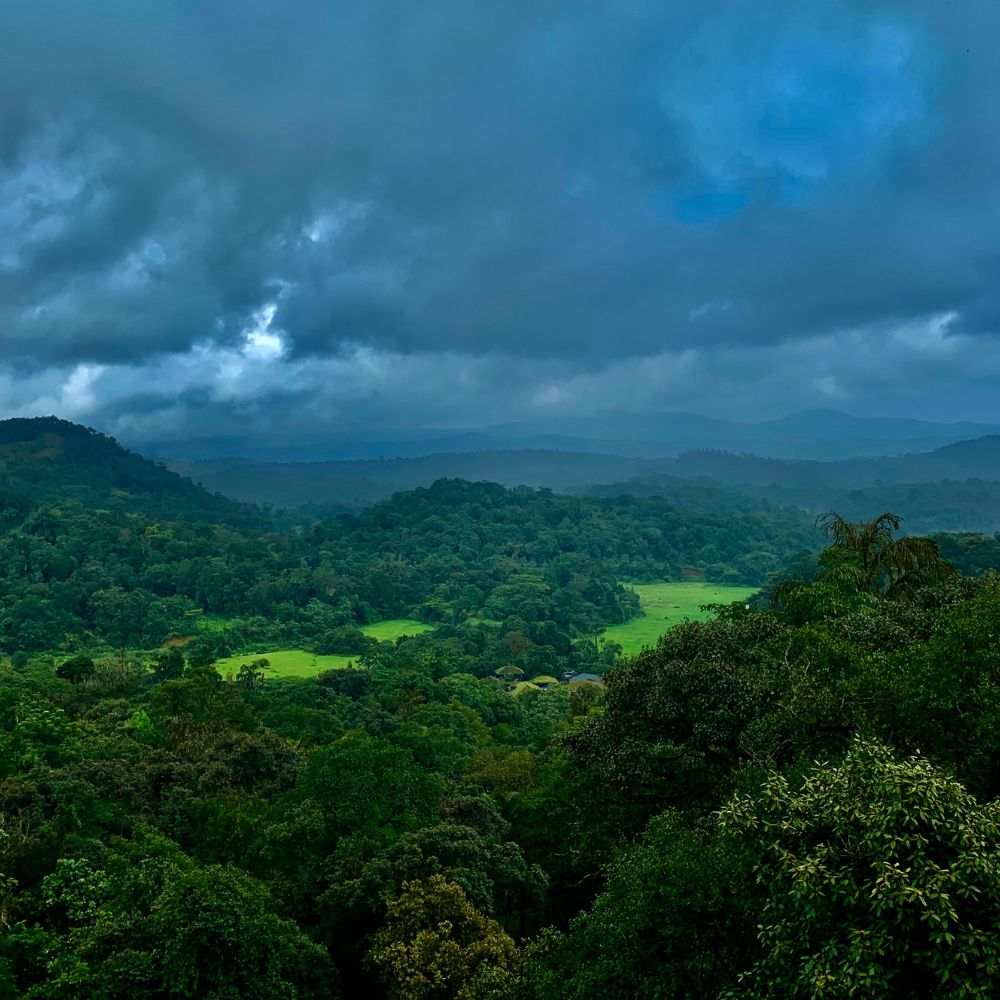
Coorg, also known as Kodagu, is a lush hill station in Karnataka, famed for its sprawling coffee plantations. Nestled in the Western Ghats, the region's undulating hills and verdant landscapes are blanketed with coffee estates that produce some of the finest coffee in India. Visitors can tour these plantations, learn about coffee cultivation, and savour freshly brewed coffee amidst the tranquil surroundings.
Coorg is home to several wildlife sanctuaries that boast rich biodiversity. The Nagarhole National Park and Dubare Elephant Camp offer thrilling opportunities to observe wildlife in their natural habitats.
Bandipur National Park, Karnataka
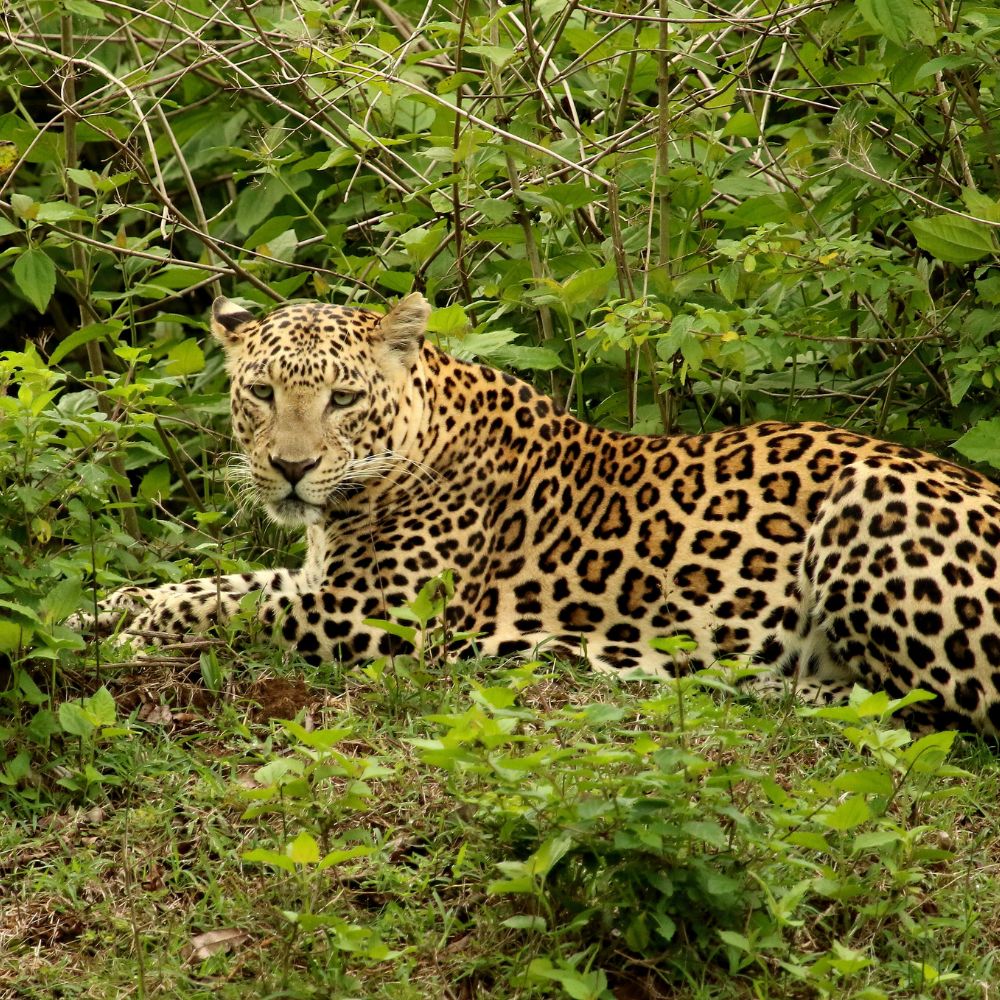
Bandipur National Park, located in the southern state of Karnataka, is one of India's premier wildlife sanctuaries. Nestled in the foothills of the Western Ghats, this park forms a part of the Nilgiri Biosphere Reserve, which is renowned for its rich biodiversity and stunning landscapes. Covering an area of approximately 874 square kilometres, Bandipur is a crucial habitat for a variety of flora and fauna, making it a top destination for eco-tourism.
Bandipur National Park is home to an impressive array of wildlife. It is one of the best places in India to spot the majestic Bengal tiger, with a significant population residing within its protected boundaries. Other prominent wildlife species include Indian elephants, leopards, gaurs (Indian bison), and a multitude of deer species such as chital, sambar, and barking deer. The park's diverse ecosystem also supports over 200 bird species, including crested serpent eagles, Indian vultures, and peafowls, making it a birdwatcher's paradise.
One of the main attractions of Bandipur is the safari experience. Visitors can embark on jeep safaris or elephant safaris, guided by knowledgeable naturalists who offer insights into the park's ecology and wildlife behaviour.
Galgibaga Beach, Goa

Galgibaga Beach, located in South Goa, is a hidden gem that offers a tranquil escape from the bustling tourist spots typically associated with Goa. This pristine beach is one of the last stretches of coastline in the state, known for its serene ambience and natural beauty. The golden sands, clear blue waters, and lush greenery create an idyllic setting for those seeking peace and relaxation.
Galgibaga Beach is famous for being one of the nesting sites of the endangered Olive Ridley turtles. Every year, between November and March, these gentle creatures come ashore to lay their eggs. Conservation efforts are in place to protect the nesting sites, and visitors are encouraged to observe the turtles from a respectful distance. This rare opportunity to witness the nesting process makes Galgibaga a unique and eco-friendly travel destination.
Sundarbans National Park, West Bengal

Sundarbans National Park, situated in the delta region of the Ganges, Brahmaputra, and Meghna rivers, is a UNESCO World Heritage Site and one of the largest mangrove forests in the world. Covering an area of approximately 10,000 square kilometres, this unique ecosystem is renowned for its rich biodiversity and stunning natural beauty. The name "Sundarbans" translates to "beautiful forest" in Bengali, aptly describing the enchanting landscape of this pristine wilderness.
The Sundarbans are home to the iconic Bengal tiger, one of the largest populations of these majestic big cats in the world. The mangrove forests provide a vital habitat for these endangered creatures, offering dense cover and abundant prey. The Sundarbans' mangrove ecosystem supports a diverse array of flora and fauna adapted to the brackish waters of the delta. Apart from tigers, the park is inhabited by other wildlife species such as saltwater crocodiles, spotted deer, wild boars, and numerous bird species including kingfishers, herons, and egrets. The elusive and critically endangered Irrawaddy dolphins can also be spotted in the park's waterways, adding to its allure.
Khangchendzonga Biosphere Reserve, Sikkim
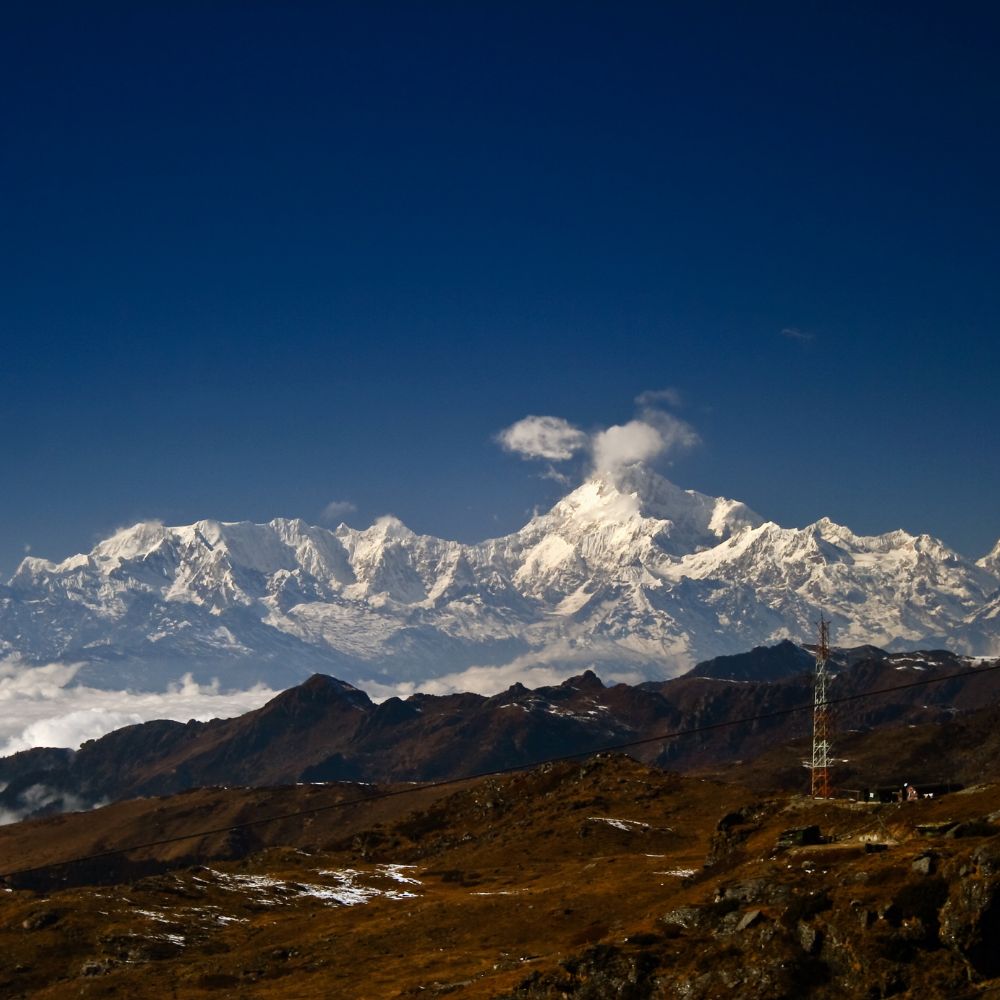
The Khangchendzonga Biosphere Reserve, located in the northeastern state of Sikkim, is a UNESCO World Heritage Site and one of the most pristine and ecologically diverse regions in the Himalayas. Encompassing the majestic Khangchendzonga mountain range, including India's highest peak, Mount Khangchendzonga, this biosphere reserve is a haven for biodiversity and a sanctuary for rare and endangered species.
The Khangchendzonga Biosphere Reserve is renowned for its unparalleled biodiversity, with a remarkable variety of flora and fauna adapted to the high-altitude Himalayan ecosystem. The reserve is home to several endemic and endangered species, including the snow leopard, Himalayan tahr, red panda, and numerous bird species such as the Himalayan monal and blood pheasant. Cultural Heritage and Indigenous Communities
In addition to its natural wonders, the Khangchendzonga Biosphere Reserve is steeped in cultural heritage, shaped by the indigenous communities that inhabit its remote valleys and mountain slopes. The Lepcha, Bhutia, and Limbu communities have lived in harmony with the land for centuries, practising sustainable agriculture, and traditional medicine, and preserving their rich cultural traditions
Jotsoma Village in Kohima, Nagaland

Lodged in the heart of Kohima district, Nagaland, Jotsoma Village is a hidden gem that exudes charm and tranquillity. This quaint village, with its lush landscapes and rich cultural heritage, beckons travellers seeking an escape into nature and tradition. A tapestry of scenic beauty, historical richness, and modern educational hubs, Jotsoma offers a unique experience that captures the essence of Nagaland.
Perched approximately 8 kilometres from Kohima, Jotsoma Village is a green oasis surrounded by undulating hills and pristine forests. The environment here is a harmonious blend of flora and fauna, with towering trees, vibrant flowers, and the occasional sighting of exotic wildlife.
One of the most anticipated events in Jotsoma is the Sekrenyi festival, held in February. This festival is a jubilant celebration of purification and renewal, featuring traditional dances, music, and feasting. It's a time when the entire village comes alive with colour and merriment, offering visitors a glimpse into the enduring spirit of the Angami culture. For the intrepid traveller, Jotsoma Village offers an array of activities that cater to different interests. The natural beauty of the area invites exploration, with numerous trails perfect for trekking and nature walks.
Great Himalayan National Park, Himachal Pradesh
Nestled in the Kullu region of Himachal Pradesh, the Great Himalayan National Park (GHNP) is a sanctuary of unparalleled natural beauty and biodiversity. Spanning over 1,171 square kilometres, this UNESCO World Heritage Site is a testament to the majestic grandeur of the Himalayas. The Great Himalayan National Park is characterized by its diverse topography, ranging from deep valleys and dense forests to alpine meadows and snow-capped peaks. The park's altitude varies from 1,500 meters to over 6,000 meters, creating a mosaic of habitats that support a wide variety of life forms.
The park is crisscrossed by numerous rivers and streams, fed by glaciers and yearly snow, which carve their way through the rugged terrain. GHNP is a biodiversity hotspot, home to a remarkable array of flora and fauna. The park boasts over 375 species of fauna, including some of the most elusive and endangered animals. The flagship species of the park include the snow leopard, Himalayan brown bear, and musk deer, each representing the pristine wilderness of the region.
Tsomoriri Wetland Conservation Reserve, Ladakh
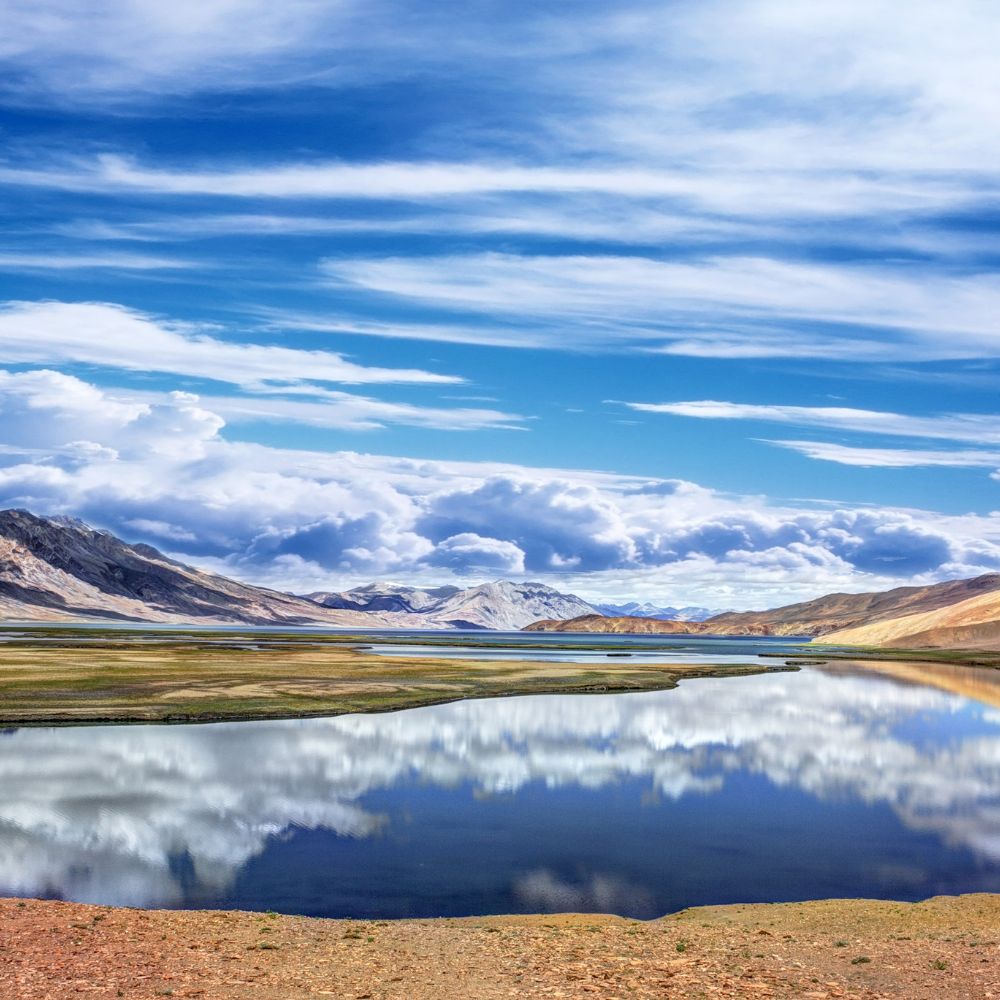
Tsomoriri Wetland Conservation Reserve, lodged in the rugged terrain of Ladakh, is a hidden gem that displays the raw beauty and ecological richness of the region. Perched at an altitude of 4,595 meters, this high-altitude lake and its surrounding wetlands offer a mesmerizing blend of stark landscapes, diverse wildlife, and cultural heritage.
Tsomoriri, also known as Lake Moriri, is one of the largest high-altitude lakes in India, stretching approximately 28 kilometres in length and 8 kilometres in width. This brackish lake is fed by springs and snowmelt from the surrounding mountains, creating a unique ecosystem in the arid region of Ladakh. The region is characterized by its cold desert climate, with harsh winters and short summers. Despite these extreme conditions, the wetlands around Tsomoriri support a variety of plant life, including salt-tolerant species and alpine flora.
The reserve is home to several rare and endangered species, including the Black-necked Crane, Bar-headed Goose, and the Tibetan Wild Ass (Kiang). The Black-necked Crane, in particular, holds cultural significance for the local communities and is considered a symbol of good fortune. Other notable wildlife include the Himalayan Blue Sheep (Bharal), Tibetan Gazelle, and various species of ducks and geese.
For adventure enthusiasts, Tsomoriri offers a range of activities that showcase the rugged beauty of Ladakh. Trekking is one of the most popular activities, with several trails leading through the breathtaking landscapes surrounding the lake. Popular trekking routes include the Korzok to Kibber trek, which takes you through remote valleys, high mountain passes, and pristine wilderness areas.
Ranthambore National Park, Rajasthan
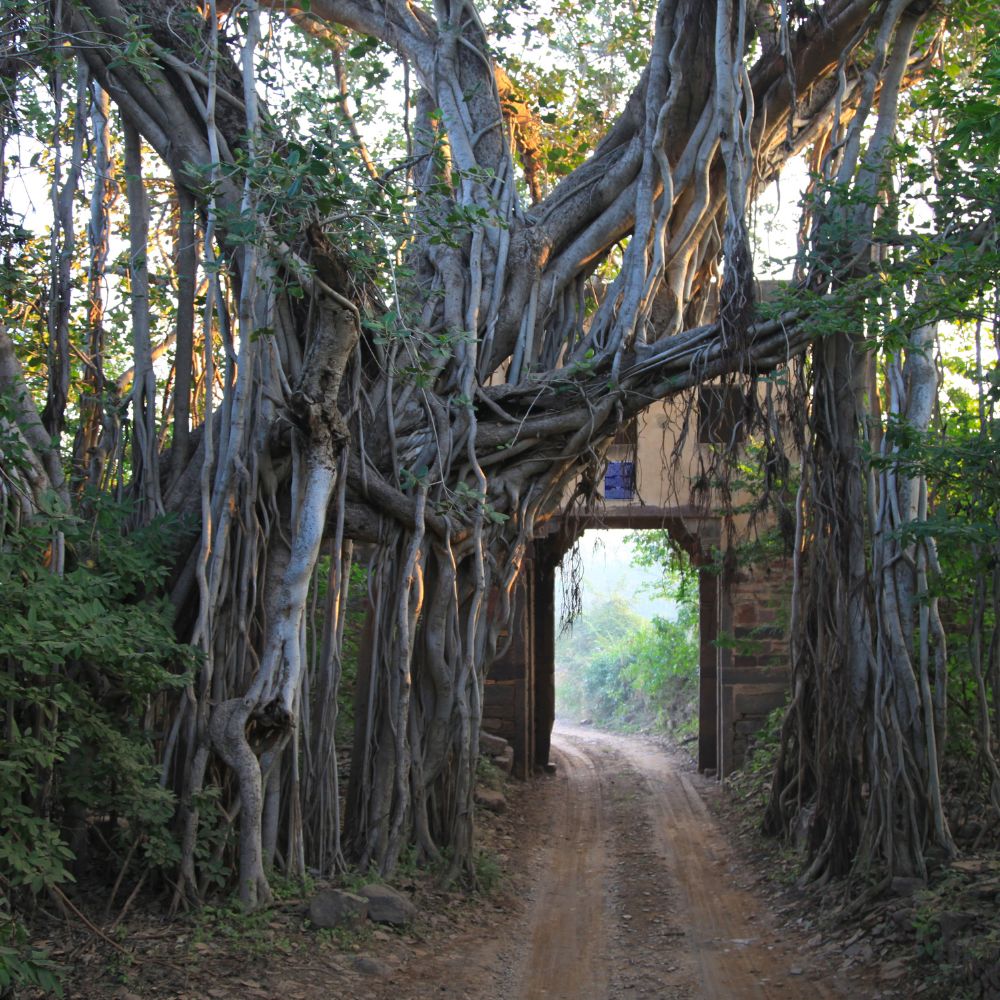
In the heart of Rajasthan, where the rugged Aravalli and Vindhya hill ranges converge, lies the majestic Ranthambore National Park. This sanctuary, once the royal hunting grounds of the Maharajas of Jaipur, is now a premier wildlife reserve renowned for its thriving tiger population. Spanning over 1,334 square kilometres. The park is dominated by the imposing Ranthambore Fort, a UNESCO World Heritage Site, which adds a touch of historical grandeur to the natural splendour.
The park's terrain is dotted with numerous water bodies, including the prominent Padam Talao, Rajbagh Talao, and Malik Talao, which serve as vital lifelines for the park's fauna. The diverse topography and water resources create a variety of habitats, supporting a rich array of wildlife. Ranthambore is synonymous with its tiger population, making it one of the best places in India to spot these elusive big cats in their natural habitat. The park's tigers are known for their visibility, and sightings are relatively frequent, providing an exhilarating experience for visitors.
Beyond tigers, Ranthambore is home to a plethora of wildlife species. Leopards, striped hyenas, sloth bears, and wild boars roam the park, adding to its biodiversity. The herbivore population includes sambar deer, spotted deer (chital), nilgai (blue bull), and Indian gazelles (chinkara), which form the prey base for the park's carnivores. Ranthambore offers a range of safari experiences that cater to different preferences and interests. The park is divided into several zones, each with its distinct landscape and wildlife. Jeep and canter safaris are the primary modes of exploring the park, providing close encounters with its diverse flora and fauna.
Kanha National Park, Madhya Pradesh
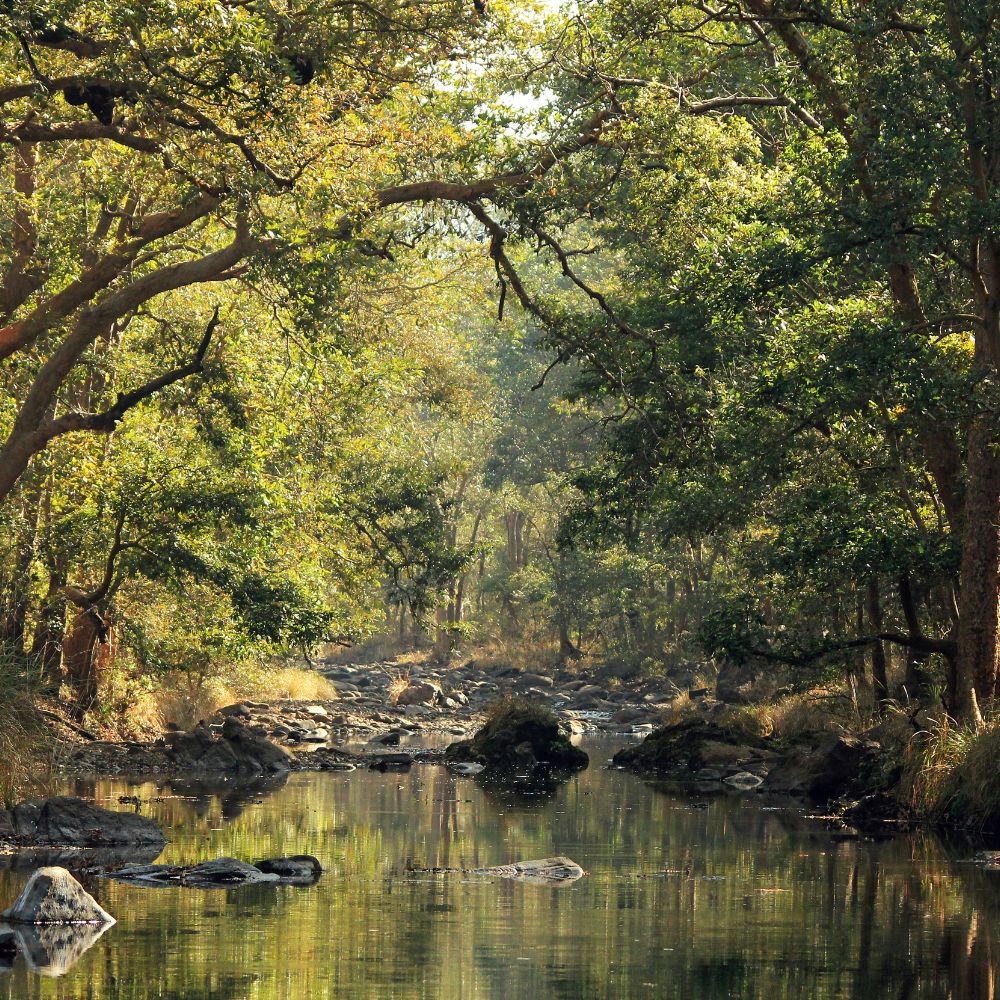
Located in the heart of India, Kanha National Park in Madhya Pradesh is a realm of unparalleled natural beauty and wildlife diversity. Renowned for its lush sal and bamboo forests, rolling grasslands, and meandering streams, Kanha is one of the largest and most scenic national parks in India. Established in 1955.
The park is divided into two main zones: the core zone and the buffer zone. The core zone is strictly protected and serves as the primary habitat for wildlife, while the buffer zone accommodates limited human activities, ensuring a balance between conservation and local livelihoods.
The park's flagship species is the Bengal tiger, and Kanha is one of the best places in the world to observe these majestic predators in the wild. In addition to tigers, Kanha supports a healthy population of leopards, wild dogs (dhole), and sloth bears. The park is also renowned for the successful revival of the hard-ground barasingha, a species once on the brink of extinction.
Kanha National Park offers a range of safari experiences that cater to different preferences and interests. The most popular activities include jeep safaris and elephant safaris, providing thrilling opportunities to explore the park's diverse habitats and encounter its wildlife.
Andaman Islands: A Tropical Paradise
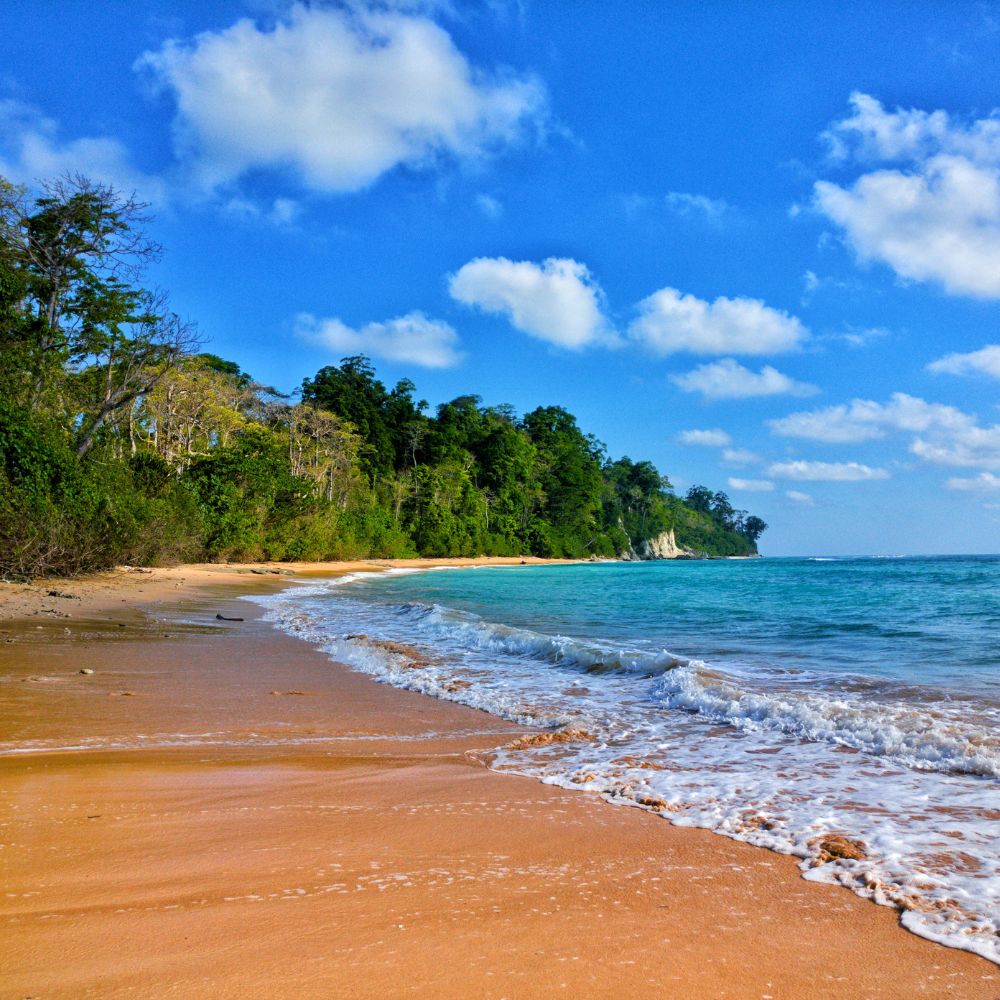
The Andaman Islands, an archipelago located in the Bay of Bengal, are a tropical paradise renowned for their pristine beaches, turquoise waters, and lush rainforests. These islands, part of the Union Territory of Andaman and Nicobar Islands, India, offer an enchanting blend of natural beauty, rich biodiversity, and fascinating history. With over 300 islands, each with its unique charm, the Andamans are a haven for adventure seekers, nature lovers, and history enthusiasts alike.
The Andaman Islands are a stunning collection of coral-fringed islands, islets, and rocky outcrops that stretch over approximately 800 kilometres. The coral reefs are some of the most vibrant in the world, home to a plethora of colourful fish, sea turtles, and other marine creatures. The pristine beaches, such as Radhanagar Beach on Havelock Island, often listed among the best in the world, provide the perfect backdrop for relaxation and water activities.
The Andaman Islands offer an array of adventure activities that cater to all kinds of thrill-seekers and nature lovers. Scuba diving and snorkelling are popular due to the vibrant coral reefs and abundant marine life around islands like Havelock and Neil. Water sports enthusiasts can enjoy sea kayaking, jet-skiing, and parasailing, while pristine beaches like Radhanagar and Elephant Beach are perfect for relaxation and sunbathing, blending adventure with tranquillity.
Mawphlang Sacred Forest, Meghalaya
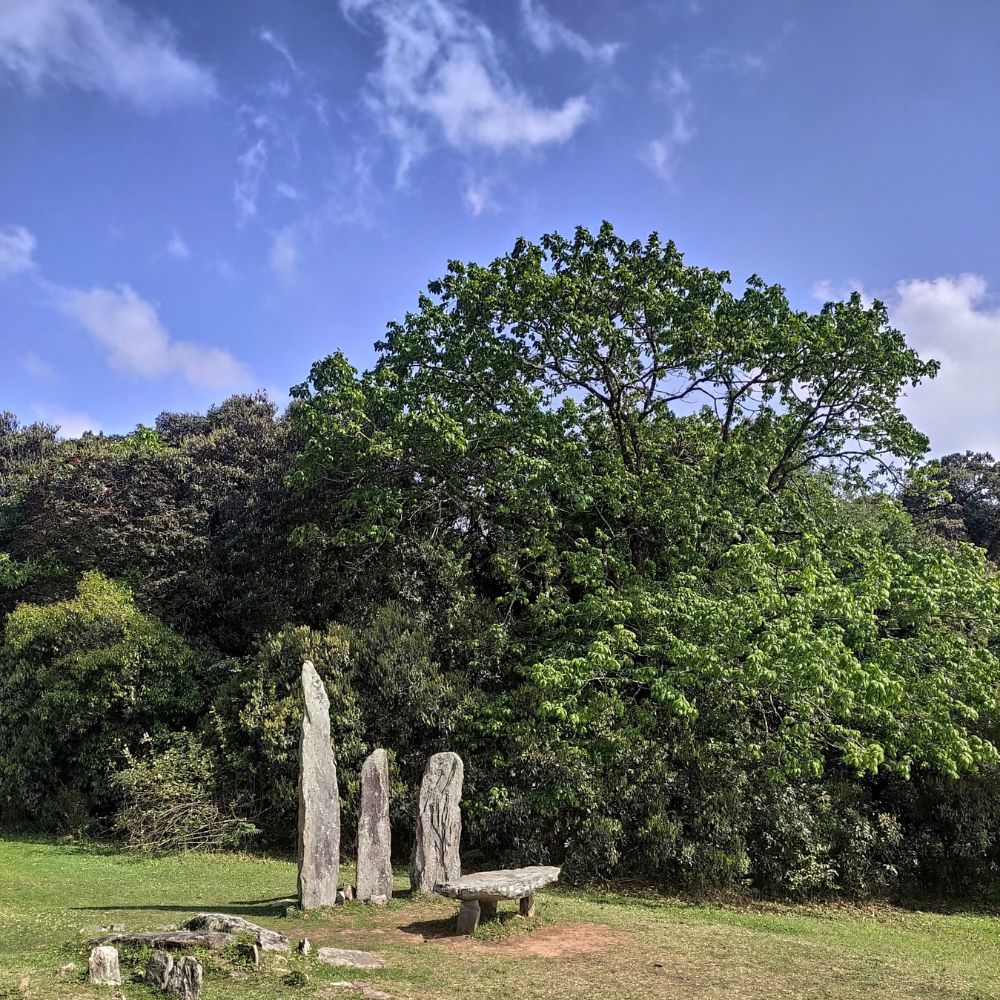
Nestled in the East Khasi Hills of Meghalaya, the Mawphlang Sacred Forest is a verdant haven that embodies the mystique and reverence of nature. This ancient forest, spanning around 78 hectares, is a living testament to the Khasi tribe's deep-rooted traditions and ecological wisdom. Mawphlang Sacred Forest is situated approximately 25 kilometres from Shillong, the capital of Meghalaya. The forest is a dense, evergreen expanse, with towering trees draped in moss, ferns, and orchids. The undergrowth is thick with shrubs and herbs, creating a multilayered canopy that supports a myriad of life forms.
While the dense vegetation makes wildlife sightings rare, the forest is inhabited by several species of birds, insects, and small mammals. The birdlife includes species like the Khasi Hill Mynah, Grey Sibia, and the Rufous-necked Hornbill. For the Khasi people, the Mawphlang Sacred Forest is much more than a natural treasure; it is a sacred space imbued with spiritual significance. The forest is believed to be the abode of the forest deity, known as Labasa, who protects the land and its people.
Exploring Mawphlang Sacred Forest offers a unique blend of adventure, education, and spiritual enrichment. Visitors can embark on guided nature walks through the forest, led by knowledgeable local guides who provide insights into the ecological and cultural aspects of the grove.
Conclusion
In conclusion, eco-tourism in India is not just about exploring breathtaking landscapes and encountering diverse wildlife; it's a journey of discovery, conservation, and cultural immersion. So, whether you're seeking adventure, relaxation, or a deeper connection with nature, India's eco-tourism hotspots beckon you to embark on a journey of exploration and enlightenment.
